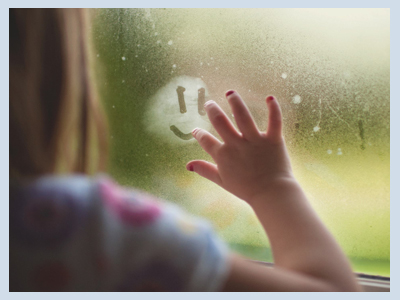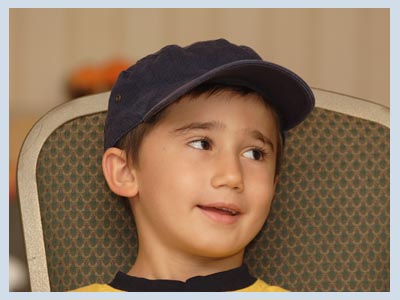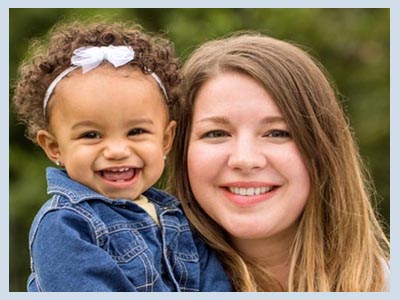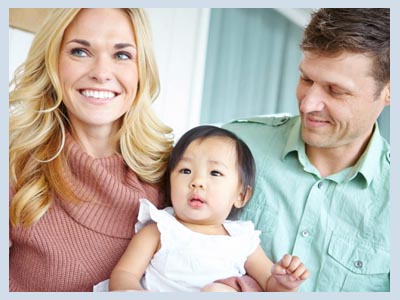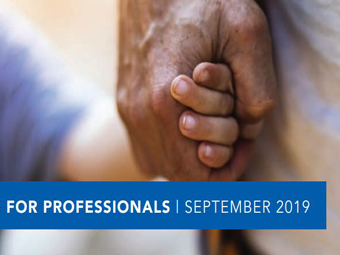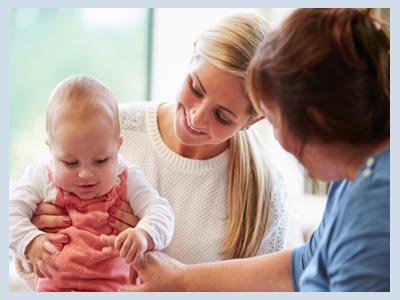Contact with Birth Families
“Today, parents who adopt children from foster care cannot pretend their children were always a part of the family, and most know that becoming a legal part of a new family does not erase a foster child’s emotional ties to the past. As openness in infant adoption gains currency, it is worth considering how facilitated, safe contact with birth family members can benefit children.”
N. A. Council on Adoptable Children
“Open” relationships in adoption and foster care allow parents and the child to interact directly with birth parents. Also known as “fully disclosed,” this type of adoption can help children and parents minimize and resolve the change or loss of relationships. It also can help those involved to maintain and celebrate adopted children’s connections with all the important people in their lives.
In recent years, we have embraced the concept of open adoption with gusto — yet the journey, for some, has proved to be unexpectedly bumpy. Lack of support, a sudden change in the life of either the adoptive or biological family, logistical pressures — all can complicate matters. Add to that the emotionally charged issues at stake-parenthood, power, identity — and open adoption can make for some combustible family dynamics.
Even among experts, definitions of “open adoption” vary wildly. In its simplest sense, an open adoption is one in which the adopting parents and the birth mother (and possibly the birth father) have some form of contact, directly or through an agency or lawyer. At one extreme are the families who exchange letters and pictures but have never met. At the other are the children whose adoptive and birth families socialize at least once a month or more.
For children in open adoptions, the toughest challenge may come when a birth parent who’s been visiting or calling suddenly vanishes or drifts away. The trigger can be a move to a new job, a marriage, or a personal problem, such as drugs or alcohol. In some cases, a birth mother may not feel worthy of contact, or she may get the message from the adoptive parents that she’s not welcome. Occasionally birth parents experiencing shame or sadness just have to retreat for a while. In rare cases, ONLY when safety is an issue, adoptive families may have to cut off contact for some time. Adoptive families who have lost touch with a birth parent should establish contact with other members of the child’s biological family if they can, such as birth grandparents.
“A lot of birth parents went into it thinking it was a privilege to them,” said Brenda Romanchik, executive director of Insight: Open Adoption Resources and Support, an adoption education and support organization in Royal Oak, Michigan. “So when things got tough, they thought, this isn’t working for me, so I’m going to leave. They didn’t take the child into account.”
Most importantly, experts say, biological and adoptive parents must remember that open adoption is about meeting the needs of children, not adults. Openness does not simply wipe away the feelings of grief, fear, or insecurity that can swirl around an adoptive placement. However, maintaining biological connections for the long term benefit of the child is part and parcel of the job of parenting a child not born to you.
More Information and Resources:
Helping Children with Family Connections
If children lose the feeling of connectedness with their families, then they may have lost a big piece of their identity and have difficulty answering the question, “Who am I?” Whether children have a lot, a little contact or no contact with birth families, they have dreams and feelings about their families.
Top Ten Ethical Considerations In Open Adoption Practice
Open adoption is designed to be a child-centered arrangement based upon the premise that humans need genetic continuity to attain a healthy identity.
Understanding Birth Parents: Grief and Open Adoption
Open adoption is often presented to birth parents as a way to lessen the grief of losing a child to adoption. The grief we feel for our children includes not only missing the times we had with them as their mother or father, but mourning for the times we will not have with them as their parents.
Facilitated Openness Can Benefit Children Adopted from Care
Today, parents who adopt children from foster care cannot pretend their children were always a part of the family, and most know that becoming a legal part of a new family does not erase a foster child’s emotional ties to the past. As openness in infant adoption gains currency, it is worth considering how facilitated, safe contact with birth family members can benefit children adopted from care.
The Open Adoption Question
We sincerely believe more information is better than less, and that the more answers we can offer our children now the better their adjustment and understanding will be in the future.
Talking to Kids About Open Adoption
If your child doesn't ask, you need to raise the topic yourself; find out what your child thinks and what he wants to know. It's your job to give them their information. It's their right to know the truth.
Openness – A Personal Decision?
Sometimes bringing our children’s birth parents into their lives – and ours – whether through truth-telling conversations, or letters and pictures, or occasional visits, or on-going contact – can be as uncomfortable and at times even painful for our children.
Exploring Your Family’s Culture
In open adoption, two family cultures come together to provide for the needs and to shape the life of an adopted child. Differences in these family cultures can sometimes cause confusion and mis-communication if they are not explored and acknowledged.
Helping Your Adopted Children Maintain Important Relationships With Family
Children and youth who have been adopted and maintain relationships with their birth families, caregivers, and other important people in their lives benefit in significant ways. Ongoing contact can lessen the loss and grief associated with separation, support children's identity development, and help them overcome adversity as they prepare for adulthood. Supporting the development or maintenance of these connections is in the best interests of the child and requires a strong commitment from both the adoptive and birth families.
Helping Children and Youth Maintain Relationships With Birth Families
Children and youth who are adopted need to maintain relationships with their birth families and it is vital that their parents support them in doing so. For this bulletin, we focus on the importance of maintaining connections between children and their birth families or caregivers that continue to evolve as children grow and their lives change. The bulletin also discusses how child welfare professionals can help families maintain and facilitate those connections.
Open Adoptions are Not Made-For-TV Movies
“But aren’t you worried they’re going to show up on your doorstep in the middle of the night, break into your house, and try to steal their baby back from you?”
Conflict of Two Mom’s – An Adoptee’s Dilemma
Our first moms need to accept that we can love our adoptive moms. Our adoptive moms need to accept that we can love our first moms. We adoptees need to accept that we can love both moms.


